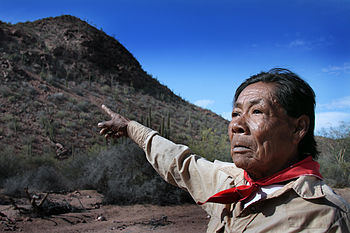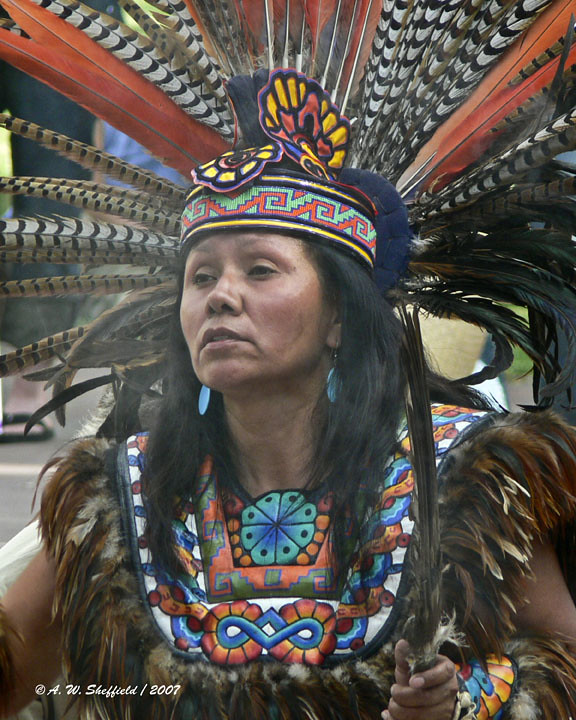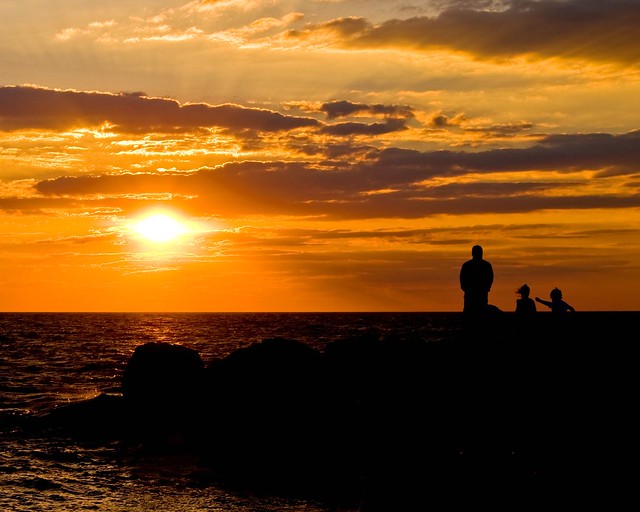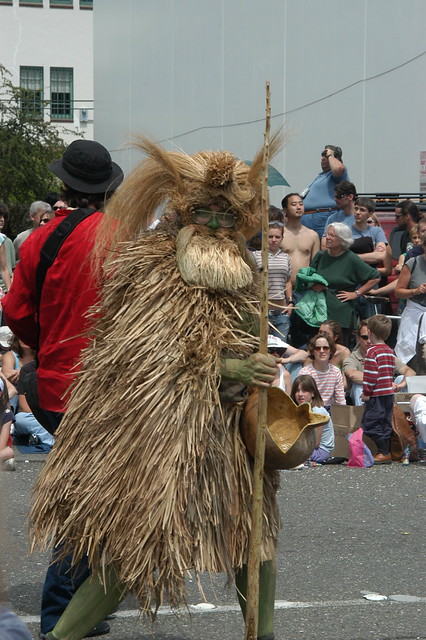This is only a general overview of shamanism. This is only to familiarize you with the some of the guidelines and terms used in both traditional and contemporary shamanic experiences.
Shaman is one of the few spiritual paths that has remained relatively unchanged through the centuries. While many spiritual paths have evolved into the many practices of neo-pagan groups and Christian frequency religions, Shamanism has outlasted the test of time which leads to its continued popularity. There is no way for any website or book to translate the necessary training nor experience of Shamanism. One must study with a teacher or Master to truly have the shamanic ecstasy referred to.
What is shamanic ecstasy? The word itself comes from a Greek term ekstasis meaning to be placed outside. This is a state of joy that transcends the ability to describe in words. It literally means to enter a form of trance or state of consciousness that allows the shaman to journey to stand outside of themselves. During the state of this Shamanic ecstasy, a Shaman is journeying to engage in a soul retrieve, to guide the soul or the dead, to divine answers or to add their personal knowledge by associating with higher beings.
The Shaman may also enter a state that is for pure Prophetical purposes during this journey. This form of Divination is seen many times during the workings of John the Baptist. It is a seership that is entered in which they are retrieving certain information in regards to the events of the future.
The last state we will discuss is the state of Mystical journey. This is when the Shaman enters a state of consciousness to become closer with the Divine Masters. This state of trance is usually done through the use of mantras and tends to bring a greater or higher level of spiritual understanding and awareness. Many Shaman uses meditation, contemplation, visualization or spiritual concentration as well as mantras to reach this state. This is a state of consciousness that allows the out of body journeys so often referred to by contemporary Shamanic journeys. They invoke physiological, emotional and intuitive responses. On the physiological response, the body will exhibit an involuntary response related to being electrically charged. The emotions of the Shaman can run a gauntlet of feelings and emotions that can range from complete overwhelming joy to a shocking fear. The mind and body completely blend together allowing an expanded state of consciousness for greater awareness.
It is important to note that this is not the same state of consciousness that is referred to as astral projection or transcendental meditation that is so popular in today's New Age groups.
A traditional Shaman is one who is associated with a group or tribe of gathering or hunting peoples. This can be anything from Native Americans to the aborigine groups of South America. It is not to say that a contemporary Shaman of today that follows traditional practices lives in the middle of the forest by themselves or in a tribe. It does, however, imply that every Shaman I have met is involved/participates on some level with a society of traditional nature and engage with training within this tribe. For the most part, these societies will not train one who is not part of their own tribe. In certain cases, this has happened; however, it is the exception, not the rule.
There are modern neo-Shamans who practice principles of Shamanism but have not engaged in the traditional initiations and training of Shamanism. Does this make them less of Shamans? No. In all Shamanic cultures, the basis of a Shaman is a healer and spiritual consultant. Although in many cultures they also have other roles in which they participate such as the priest, the primary role of a Shaman always has been the interaction of the people and the Spirit World to enlighten and heal.
By definition, a Shaman is a person who can enter the described state of consciousness at will.
Shamanism is considered by many as the oldest form of spiritual practice. It does predate all known religions. It is important to understand that Shamanism is not a religion in itself. It is simply a set of beliefs, behaviours and guidelines followed by a select few. These beliefs and practices allow the Shaman to obtain information unavailable to others, heal, retrieve souls and seek ancestor guidance.
As stated, it is in its traditional form nearly unchanged over the centuries. The best description I have heard is from Tom Cowan's book Shamanism: As a Spiritual Practice for Daily Life, Shamanism "...draws upon what is best in our society while it reforms those areas harmful to the human spirit and the health of the planet."
The word Shaman is from the Tungus word to mean "to know". Tungus are a tribe located in the Altai Mountains in Siberia. In the Tungus language, the word means a way of life, experience and belief. There are some who say that the word came from a Tibetan word Samana which is the word for a Buddhist monk. The word is, in relative comparison, a word. The derivative of the word is insignificant as the definition remains the same in every debate. It has come to represent a variety of persons from Witchdoctors, medicine men, diviners and healers. The Shaman may go by a variety of names in these various traditions, but all practice nearly identical techniques. From the Angakok's of the Eskimos to the Geilt of the Celtics, they are persons who have the ability to reach the hidden truth accessible only by a journey to the Otherworld.
What is Shamanism really? It is not a person, it is not a religious path, it is not a spiritual calling. Shamanism is an avocation. The ability to reach the altered state of consciousness in journey upon stated will is what makes a shaman a shaman. It is what defines the term.
There are two primary ways of becoming a Shaman.
Hereditary. Literally having a Shaman in the family. This never happens in neo-shamans.
The receiving of the Call. This is being appointed by the tribe or choosing to do so of your own free will. The self-taught, self-made Shaman is never as powerful as the appointed tribal Shaman or the hereditary Shaman.
What is receiving the call? The first is being appointed. The Shaman is selected as an apprentice from an early age because of some difference in personality. A solitude seeker or some sort of fit that causes a mental unbalance. This is not the same thing as a mental disorder that is often confused in modern times with epilepsy. The Call is simply a temporary moment of a shift of consciousness unfamiliar to the person. In many cases it comes with other patterns such as being attacked by an animal, struck by lightning or a near-death experience. It is common for a hereditary Shaman to receive this call from an ancestral Shaman relative to indicate it is their time.
A personal choice is a conscious decision that a person makes to study the beliefs and practices of the Shaman. For most, this self-appointed Shaman will remain less powerful and less likely to experience the state of communication with the Otherworld as compared to the appointed or hereditary Shaman. This is the path that most neo-Shamans follow.
The traditional apprentice of the Shaman will follow oral teachings of their ancestral lineage or from their tribal leader. This training can happen in two different methods. One is an ecstatic method which is training through vision and dream. This training is done by the ancestral guide or spirit guide and involves a definite initiation into the Otherworld. No book or article can exchange this information or even come close to describing the experience. The second method is traditional training by a current Shaman or tribal elder. This is the typical training of today's Shaman.
The neo-Shaman training of engaging in reading how-to books or attending a seminar should only be the journey to lead to a teacher qualified to teach the practice and beliefs.
The initiation of the Shaman is a phenomenon that is so involved that it has been known to cause death or permanent disability. In some traditions, organs are actually removed and replaced with a crystal or other object. Many do not survive the initiation process. It is said the reasoning for the physical initiation first is to ensure the readiness and worthiness of the Shaman. This is only the first part of the process. The second is the initiation into the Otherworld. This is an initiatory dream or vision that includes a ritualistic death that last three days. In many cases, it has been described as the Shaman being dismembered and reconstructed by the Divine.
Many in the neo-Shamanic belief reproduce this experience through meditation or drugs. It is vital to understand that in no way does the use of drugs have any place in traditional Shamanic belief, ritual or initiation. That is not considered shifting consciousness at will by traditional Shaman, but rather the manipulation of free will.
The initiation of Shamans regardless of a process will have a common theme. The Shaman will have a ritual dismemberment of the body and the replacement of organs with another matter such as crystals. It will include time alone in the wilderness, being symbolically dead, symbolically descending into the Spirit world through a self-induced trance, a following of training ending with the rite of passage through torture. It is not a joyous easy process that is related by some neo-Shamanic groups. It is not a walking into a bright light and a feeling of joyous release. It is filled with highly ritualistic feats that test the pain and fear of the Shaman. It is not a five-minute process. It can take days to complete. The purpose is to embark on a spiritual or prophetical quest which will prove one's worthiness as a Shaman.
The role f the Shaman varies greatly in cultural areas. They are truly dependent upon the natural gifts of the Shaman. There are some who are medicine men, warriors, priests or even a simple carpenter. The service of the Shaman will always be the same - healing the spirit. Not always a healer of the body, but always a healer of the spirit. A Shamans primary functions are for soul-extraction, -retrieval, and -restoration. Soul extraction is the process of removing the soul from that which is attacking it either psychically, spiritually, or mentally. The soul-retrieval is the process of retrieving pieces of soul that are lost. This will always require assistance from the Other World. The beings of the Other World will assist the Shaman in determining what is wrong with the person, finding why the piece is missing, lost, or stolen and to do battle to retrieve the missing pieces. The soul restoration is literally what it says. When a person is near death a soul will want to move on. The Shaman can assist in guiding the soul to where it needs to go.
Many Shamans has natural gifts, this is especially true of hereditary Shaman. Herbal healing is one such way. Herbal healing goes back for centuries and is why many cultures looked at the Medicine Man as the Shaman. A Shaman may be a Medicine Man. A Medicine Man is not always a Shaman.
Bodywork and hands-on healing through modularities of Reiki, massage, energy work is the energy or spirit of the Shaman practices. Divination or prophecy, dream work, vision quests, soul leading and spiritual healing are all others natural gifts of the Shaman. Again, it is important to remember that a person can be Shaman and have any, all or none of these healing gifts. A person can have one or all of the healing gifts and not be a Shaman.
One misconception is that all Shaman shapeshifts into animals. Not all Shamans possess this ability. Not all who possess this ability are Shamans. Shapeshifting is the ability to change your physical form into an animal or change the physical form in the astral plane to a particular power animal. While most Shaman can do this, it is not an ability that defines Shamanic practices.
Another misconception is that black Shamans are evil. There are not white or black Shamans. Just as with other spiritual movements that discuss workings of white magic and black magic, it is not the ability to work within the Divine Spirit or Spirit Worlds that define white or black - but rather the intent of the one working within these realms. This is true of every being. There are no evil or bad spirits but rather the intent of the person working with the spirits that determine the positive or negative influence.
In many tribal cultures, the Other World or Spirit World is not as the rest of the Spiritual paths think of. For example, in some cultures, there are nine levels heaven while in other cultures there is only this world and Dream time. Most look at three worlds as the symbolic levels. These are the upper, middle, and lower worlds. These are the levels that most neo-shaman will speak off. These are the worlds that are located on the Tree of Life. Symbolically the Upper World is the world of the branches. Where spirits and gods are. The trunk is the middle world and is the here and now. The roots are the lower world and is considered a very powerful place. It is the place of the ancestral knowledge and where many answers lie hidden.
The process of how Shaman travel is widely variant in the description. This is partly due to the inability to express into words certain aspects of the Shamanic journey. It can be described by some as travelling the tunnels of life. The Tree Life being the central object to travel through. The roots leading to tunnels to both the upper and lower worlds. There are some who speak of the inner tunnels being the chakra system. There is no right or wrong description. The variance in terminology is based solely on the culture of the Shaman and the creative imagination of relating the indescribable to the world.
The actual journeying to the Otherworld is leaving the here and now and allowing the spirit to leave the body and journey to the spirit realm. This Shamanic state of consciousness is both a trance state and a learned state of being completely aware of whats occurring and in control of the situation. A guided journey is merely a journey to learn and has no comparison to the Shamanic state of consciousness. A guided journey is different in one vital way. A Shamanic journey is at will and instant. A guided journey is where a guide (spirit, animal or of this world) takes control of the dream or meditation and leads you to where they want you to go. It is not always pleasant. Much like other types of Shamanic journeys, this is not a simple joyful encounter. The purpose is to take the Shaman to a place where they can learn and grow in their powers. It is where they can meet and learn from the guide lessons that are vital in their training.
The guides referred to are spirit helpers. They can be an ancestral god or figure, animal totem, or Shamanic ancestors. An animal totem or power totem is something that has special powers or meanings to that particular Shaman. It is more important as to the way the totem represents rather than what it is.
There are no rules, nor rides in being a Shaman. There are certain beliefs and behaviours that guide a Shaman. A moral code of ethics of sorts. They are truths for the Shaman. For example, the physical world has physics and boundaries that are linear. The Spirit world is not bound to inflexible laws of the physical world. All in life is connected and interdependent upon one another. All power is connected to life. The shaman must know the entrance and exit to the Other World. There are beliefs and behaviours that Shamans must follow that are innate to their souls.
Bright blessings,
Rev. Carla Goddard
Mom of three absolutely amazing children. Married for 15 years to my soul mate and best friend. Mom to four dogs who all believe they are my favourite. Blessed to have too many family and friends to list.
I am first and foremost a spiritual being having a human experience. Ordained Pagan Minister. I am a Spiritual Life Coach, Intuitive, Spiritual Healer and author. I also do motivational speaking and operate a specialized publishing company.
Having just completed my Bachelor's Degree, I am currently working on my Master's Degree in Holistic Healing. I am also currently taking classes in Physic Development.
I love to spend time in my gardens and talk with the fairies.
Usui Reiki Ryoho Master
Chakra Therapist
Spiritual Life Coach
Biofield Energy Worker
Intuitive
3rd Degree Wiccan Priestess with the Temple of Brigit, Saco Maine
Member of:
Reformed Druids of North America
United Pagans (UPF)
The Association of United Pagans
Distance Healing Team
Lightworkers
The Reiki Council
The Gaia Foundation
The Wiccan Collective
|










